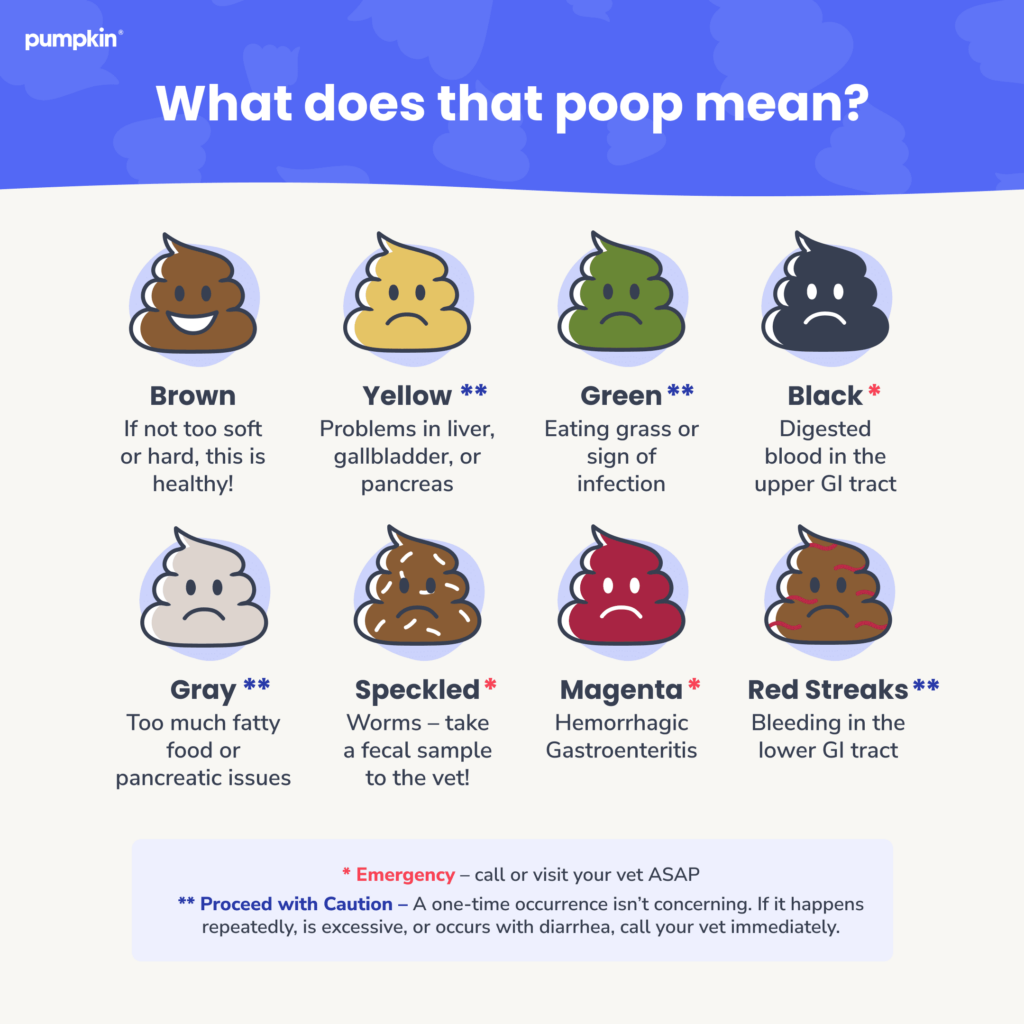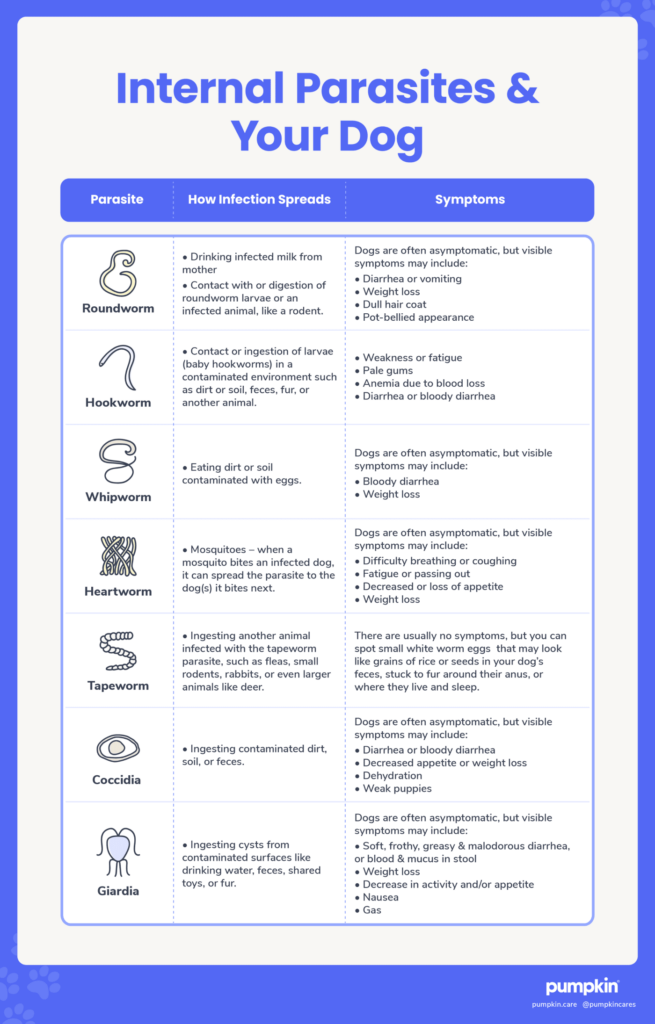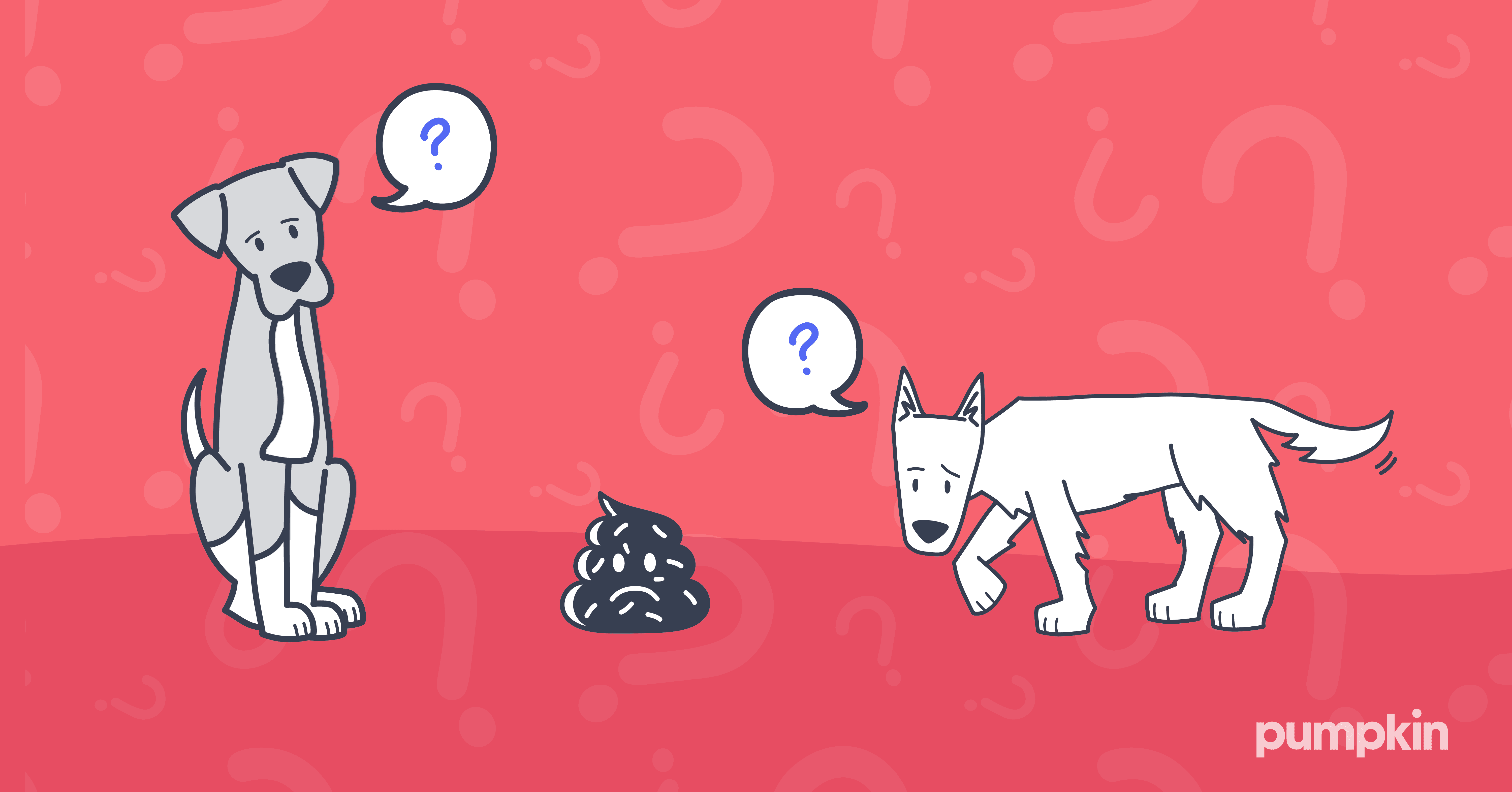Key Points
- Healthy dog poop is well-formed, log-shaped, and some shade of chocolate brown.
- Unhealthy dog poop is too hard or too soft, off-colored, and has a foul odor.
- Different colors and textures of dog poop can mean different things. Never hesitate to call your vet if you notice a change.
- Routine check-ups, a high-quality diet, and parasite preventatives are essential in supporting your dog’s digestive health.
Dog poop can be a valuable indicator of your dog’s health, so when the “four C’s” aka poop consistency, color, contents, and coating are off, it’s worth taking a closer look.
While your veterinarian should be your #1 resource for diagnosis and treatment, our dog poop health guide can help you decode what’s normal, what’s not, and when to seek medical attention.
Let’s dive in!
What should a healthy dog poop look like?
Healthy dog poop is well-formed, log-shaped, and some shade of chocolate brown. It shouldn’t be too hard or too soft, rather, it should have a play-doh-like consistency. If your pup’s poop fits this description, their digestive system is likely doing just fine!
Alongside color, contents, and coating, veterinarians use a “Consistency scale” when evaluating a dog’s poop. This scale runs from 1-7 — 1 being hard, dehydrated poop and 7 being liquid diarrhea. Typically, vets like to see a score of 2 or 3 to deem the dog poop healthy.
What does unhealthy dog poop look like?
Unhealthy dog poop is typically foul-smelling and soft or runny in texture – sometimes you’ll even spot mucus in your dog’s poop. On the flipside, if your dog is dehydrated, their poop may look like small, hard pellets. Even when texture appears to be normal, different colors can indicate different issues. For example, your dog’s poop could be well-formed but looks a bit grey which could mean issues with their pancreas. Basically, any poop that isn’t well-formed and some shade of brown should be monitored.
How often should a dog poop?
As a pet parent, it’s important to keep track of your pup’s bowel movements. On average, dogs will typically poop one to five times per day depending on their diet and metabolism – sudden changes could indicate potential health issues and warrant a vet visit.
10 dog poop colors and meanings
Dog poop comes in a rainbow of colors, but some hues can signal a deeper issue in the digestive tract. Let’s break them down.

1. Chocolate brown dog poop
As mentioned, a healthy dog poop should be log-shaped and chocolate brown. It’s pretty firm and easy to pick up. If your dog’s stool is in the chocolate brown color range, things are probably running smoothly.
2. Red, streaky dog poop
If you notice red streaks in your dog’s poop, it could indicate bleeding in the lower gastrointestinal tract. While it may be nothing serious, it’s always better to err on the side of caution and consult your vet.
3. Black dog poop
Black dog poop or “melena” can occur due to the presence of digested blood, which often indicates bleeding in the upper gastrointestinal tract. Other causes of blood in dog stool includes intestinal parasites, bacterial infections, and inflammatory bowel disease. Call your vet!
4. Grey dog poop
Grey dog poop could indicate undigested fat in the stool, which may be a sign of an issue with your dog’s pancreas. If you spot recurring grey dog poop, it’s time to schedule an appointment with your vet.
5. Yellow dog poop
Yellow dog poop may be the result of disruption in digestion. It can be caused by various factors, such as infection, changes in food, or issues with the liver or gallbladder. If it’s a one-time occurrence, it may not be cause for concern. However, if it persists or is accompanied by other symptoms, consult your vet.
6. Green dog poop
Green poop can be a head-scratcher. It may indicate a faster digestive process or be a result of dietary changes, infections, or munching down on a little too much grass. If your dog’s green poop continues, seek your vet’s advice.
7. Orange dog poop
Orange dog poop can mean too much bile, aka liver issues or biliary disease. If your dog has consistently has orange diarrhea, call your vet.
8. White dog poop
White poop can indicate a lack of bile. It can also be a sign that your dog has been eating a few too many bones or too much calcium! This can be a problem, especially if it comes with doggy constipation
9. Pink or magenta dog poop
Pink or magenta poop can be a sign of hemorrhagic gastroenteritis, which is a potentially life-threatening condition. This color poop warrants a trip to the dog ER.
10. Mystery rainbow
If you’re seeing mysterious speckles of color in your dog’s poop, it’s possible they got into something they shouldn’t have. Check around for missing toys, human food, and other things that don’t belong in your little buddy’s belly. Ingestion of foreign objects can cause blockage, digestive problems, and allergic reactions. Monitor your pup’s poops for passing items – and when in doubt, take them to the vet.
When you should call the vet
Your dog’s poop color is…
- Black, magenta, or speckled with white – take them to the vet immediately.
- Yellow, green, orange, grey, or has red streaks – monitor them closely and ask your vet if you should come in.
Your dog’s diarrhea persists for more than 48 hours
When your dog has non-stop diarrhea, it’s not fun for anyone. The good news is that most cases of dog diarrhea resolve on their own within a couple of days. However, if your dog’s diarrhea persists for more than 48 hours or is accompanied by other concerning symptoms, it’s time to call the vet. Your pup may need a bland diet, anti-diarrhea medication, or further examination to get their tummy back on track.
Your puppy has severe diarrhea
A bout of diarrhea will hit a puppy much harder than an adult dog. Their immature immune systems make them more susceptible to infections and gastrointestinal disturbances. If your adorable fur baby is experiencing puppy diarrhea, it’s essential to seek prompt veterinary care. Especially, if they fall into high-risk categories, such as unvaccinated or shelter puppies.
Your dog has worms
If you see white specks in your dog’s poop – it’s usually one of the first signs that your dog has worms. These pesky parasites can cause gastrointestinal issues and even stunt growth in puppies if left untreated. It’s good to bring your dog in for routine fecal tests and stay up-to-date on parasite preventatives.

Your dog has an intestinal blockage
Detecting an intestinal blockage early on is tricky. In the beginning, an intestinal blockage could seem merely like a case of diarrhea, vomiting, or constipation. However, if weakness, lethargy, abdominal pain, and loss of appetite accompany these symptoms later on, you should bring your dog to the vet immediately.
How to keep your dog’s poop healthy
Maintaining your dog’s health means supporting their digestive health. However, some dogs have more sensitive tummies than others. Here are some tips to help you keep your dog’s stool in check:
1. Provide a high-quality diet
Your dog’s diet plays a significant role in their digestive health. High-quality dog food and even dietary supplements such as probiotics, pumpkin, and vitamin B12 can all aid your dog’s digestion.
2. Keep an eye on what your dog eats
As a responsible dog owner, it’s important to protect your dog from ingesting foreign objects or harmful substances. Keep an eye your dog during walks or playtime.
3. Ask about regular deworming medication
Parasites can significantly impact your dog’s digestive health and the appearance of their stools. Routine deworming helps prevent these pesky parasites from disturbing your dog’s digestive system.
4. Bring your vet a stool sample
Periodically, your veterinarian may suggest a stool sample analysis to check for any underlying health issues or the presence of parasites. A stool sample allows your vet to assess your dog’s digestive health more accurately and recommend treatments or dietary adjustments.
The bottom line on dog poop
Dog poop can be a valuable indicator of your pet’s health, so any change in color or consistency is worth a closer look. Healthy poop should be well-formed, a shade of chocolate brown, and hold its shape. If you notice any sudden changes, such as diarrhea, constipation, or abnormal poop color, it’s probably time to consult your vet.
While Pumpkin Dog Insurance plans can help you pay for vet bills when unexpected digestive issues arise, we also believe in taking preventive measures. That’s why we offer Preventive Essentials – an optional non insurance add-on for dogs that can reimburse you for essential routine care such as a yearly fecal test, which screens for intestinal worms and other parasites.
Dog poop FAQs
How fresh does a stool sample need to be for the vet?
You should bring your dog’s stool sample to the vet within 24 hours of it passing for the test to be valid. However, 12 hours is ideal.
How can you tell if a dog is constipated or has a blockage?
Typically, your pooch will have more symptoms than just constipation if they have an intestinal blockage. Look out for signs such as lethargy, abdominal pain, vomiting, and loss of appetite, and call your vet asap if you suspect one.
Why is my dog’s poop slimy or runny?
Stress, dietary sensitivities, bacterial or parasitic infections, inflammatory bowel disease (IBD), or colitis can all cause slimy or runny dog poop. Check with your vet about at-home remedies such as probiotics, extra fiber, or some canned pumpkin.
- How to Tell if Your Dog’s Poop is Healthy (2021). American Kennel Club. Accessed on July 11, 2023.
- Dog Diarrhea Survival Guide (2022). American Kennel Club. Accessed on July 11, 2023.
- What Does Dog Poop Color Mean? (2023). Canine Journal. Accessed on July 11, 2023.
- Dog poo color guide: what colour is your dog’s poo? (2023). My Family Vets. Accessed on July 11, 2023.




